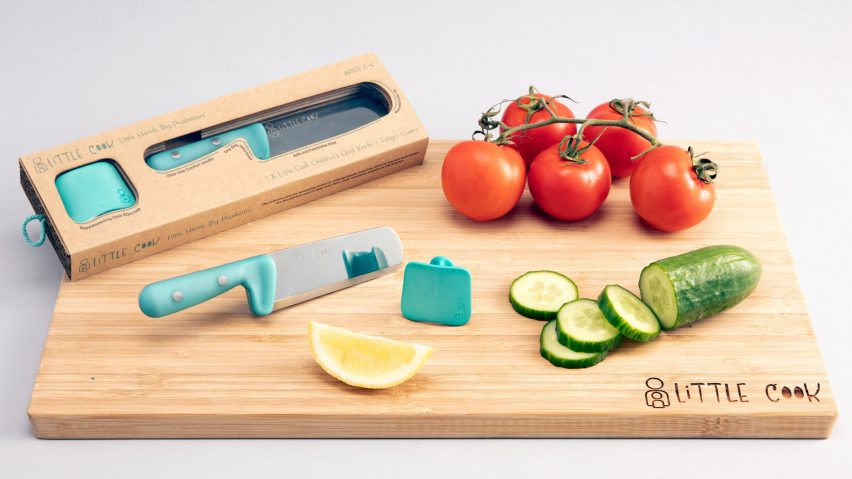
Brunel University London presents 10 design student projects
Dezeen School Shows: a mechanical pet designed to reduce anxiety is included in Dezeen's latest school show by students at Brunel University London.
Also featured is a kitchen knife and finger guard for children and a wearable healthcare device to support people with Parkinson's disease.
Brunel University London
School: Brunel Design School
Course: Industrial Design and Technology, Product Design, Product Design Engineering
Tutors: Dr Eujin Pei, Steve McGonigal, Dr Nadarajah Manivannan, Prof Joseph Giacomin, Dr Mohammed Elsouri, Dr Richard Bonser, Prof Hua Dong and Dr Arthi Manohar
School statement:
"The BSc/MDes Product Design Engineering degree at Brunel University London has been designed for creative thinkers who are comfortable with a deeper analysis of functional and technical design challenges.
"The course has a traditional hands-on and practical approach, principally focused on industrially-manufactured products. The taught subjects span across design and engineering topics.
"The programme has been recently accredited by the Institution of Engineering Designers (IED) and is available as a three year BSc or a four year MDes, which is Master's degree, with an optional year of placement or international exchange.
"The Industrial Design and Technology BA (Hons) programme at Brunel University London aims to produce graduates who are creative, curious, ethical and proficient.
"Throughout their journey at the Brunel Design School, they become empathetic designers who weave creative thinking with technology, confident in framing problems and defining design opportunities.
"They are encouraged to iteratively explore solutions to current and future challenges and develop models and prototypes to both communicate their vision and prove the practical design principles.
"Professional practice placements and industry engagement in the design studios also help prepare our students for future employment across a wide range of design industries and markets."
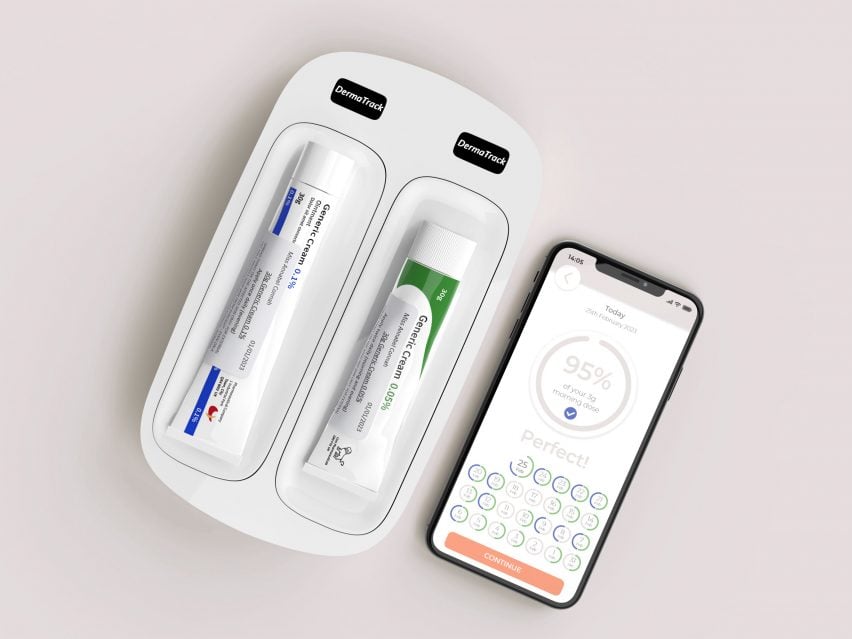
DermaTrack by Annabel Connah
"DermaTrack is a smart health device that takes the guesswork out of caring for skin conditions.
"With a quarter of all GP appointments being in regard to a skin condition, smart solutions are desperately needed to improve self-care management within the home.
"DermaTrack and its companion app help you follow your prescribed treatment routine by sending you handy reminders when you forget to apply and gentle nudges when you haven't applied the right amount.
"SmartLabels are applied to each tube of cream by your pharmacist allowing DermaTrack to automatically identify your creams and set custom reminders based on your prescription."
Student: Annabel Connah
Course: BSc Product Design Engineering
Tutor: Dr Nadarajah Manivannan
Email: annabel[at]connah.com
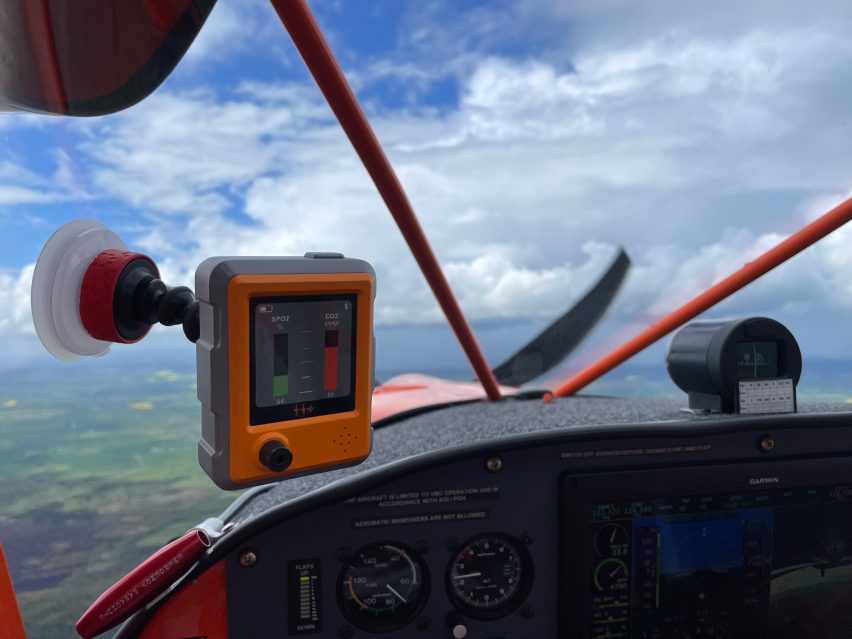
Pilot Health Monitor by Hugo Burns
"The Pilot Health Monitor is a portable device designed for general aviation (GA) pilots to reduce the risk of in-flight pilot incapacitation.
"The device connects to the pilot's smartwatch to gain blood oxygen saturation levels. It also measures the carbon monoxide levels in the cockpit and issues a warning to the pilot if the levels become dangerous.
"GA aircrafts are often older basic models and do not usually have the latest technologically advanced equipment on board.
"The high level of safety currently achieved in aviation should not obscure the fact that accidents happen and that many of these are preventable.
"In 2020, 69 per cent of all GA accidents were caused by pilot error. Just under 10 per cent of GA accidents mention some form of incapacitation in the accident report. This product came from my interest in improving safety measures in GA as I am a private pilot myself.
"This portable device is an affordable option for GA pilots to monitor their wellbeing in flight, reducing their risk of incapacitation.
"This device does not increase the pilot's workload, but is an added benefit in the cockpit. The device is easily mounted in various cockpits, allowing it to travel with the pilot between different aircraft."
Student: Hugo Burns
Course: BA Industrial Design and Technology
Tutor: Prof Joseph Giacomin
Email: hugoburns[at]me.com
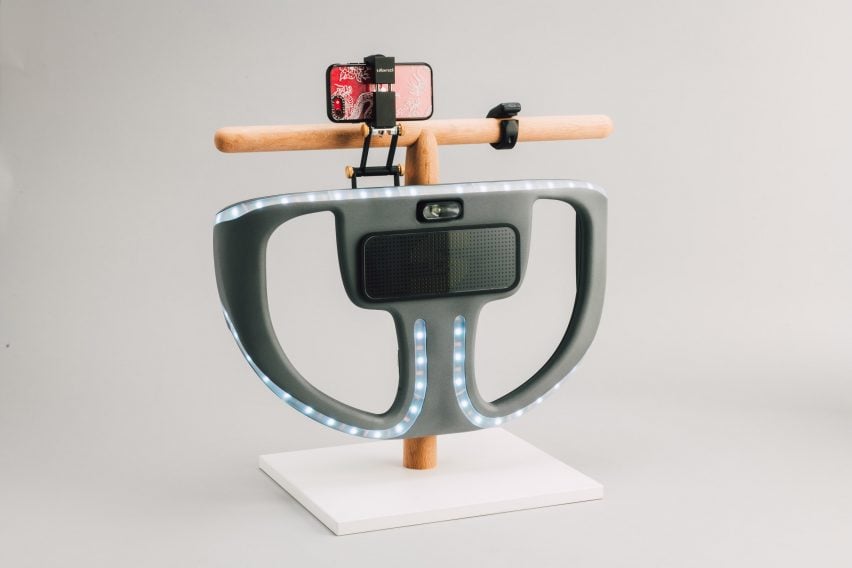
Scootum by Jaimin Bhavsar
"Scootum is a removable, all-in-one e-scooter visibility device designed to enhance rider visibility to other road users and improve the rider's visibility of the road.
"It features a phone and camera mount with pass-through charging, eliminating the need for additional accessories to meet essential needs.
"According to statistics, 80 per cent of e-scooter accidents involve a car, with 50 per cent occurring at night when fewer vehicles are on the road.
"In a survey, 30 per cent of respondents expressed that lighting is a key concern for riders, leaving them feeling vulnerable on the roads, especially at night.
"The product has a reflective body, powerful light, customisable perimeter lights and a dot-matrix display to indicate rider intentions clearly and ensure visibility from all directions; using a product, as wide as the handles of a scooter.
"The indication is controlled by an ergonomic remote, all able to be installed and set up with ease."
Student: Jaimin Bhavsar
Course: BA Industrial Design and Technology
Tutor: Dr Mohammed Elsouri
Email: jaiminnb[at]hotmail.co.uk
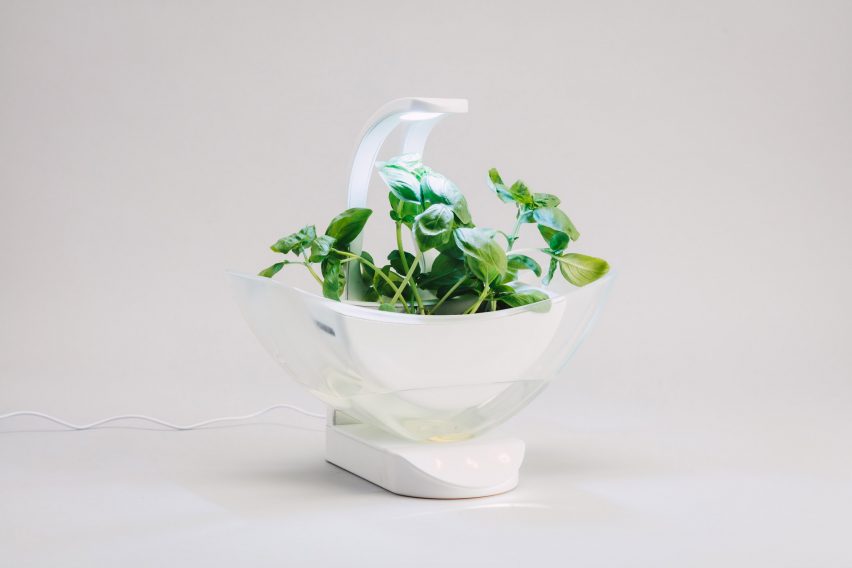
Eculus by Jake Eccles
"Eculus is a smart multi-sensory hydroponic product that integrates therapeutic horticulture into the urban home environment.
"The product aims to improve general mental health and wellbeing by integrating rhythmic chromotherapy sessions and therapeutic horticulture to cultivate small indoor herbs and spices that can be introduced into healthy home-cooked recipes.
"Urban living can have detrimental effects on mental health and wellbeing. Approximately 45.8 million adults across the UK have reported of experiencing common symptoms of stress, anxiety and depression per week.
"Since green social prescribing has become more prominent within the NHS, consumers are starting to acknowledge the active and passive benefits of plants on our health and wellbeing.
"Eculus aims to offer a form of escapism and comfort within user's homes to deter away the stress and pressure that face dwellers of modern-day society.
"Its therapeutic oscillation motion waters the plants equally, whilst proving multi-sensory features such as the sound of water cascading and the emittance of multi-spectrum grow lights.
"Users have the option to manually control its features via its inclusive touch interface or automatically control it from the secondary intervention app."
Student: Jake Eccles
Course: BA Industrial Design and Technology
Tutor: Dr Richard Bonser
Email: jakeecclesdesign[at]gmail.com
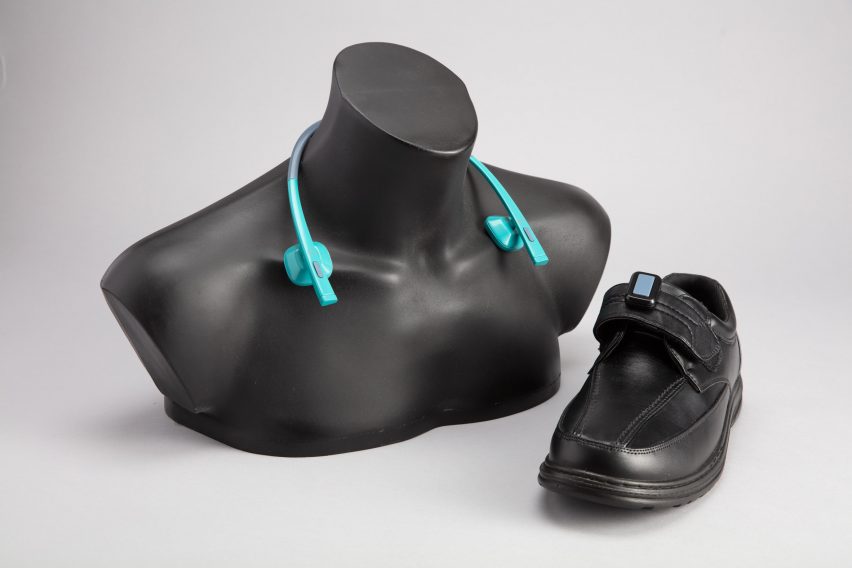
Peter by Jon Fisher
"Peter is a wearable device dedicated to my father, whom is one of 10 million diagnosed with Parkinson's disease. By playing discrete cues automatically when mobility issues occur, Peter will allow those with Parkinson's to walk with freedom, control and confidence again.
"While Parkinson's is often characterised by shaking, freezing of gait is one of its most common symptoms. Freezing causes individuals legs to become randomly stuck walking, glueing their foot to the floor.
"Amazingly, it can be solved by playing rhythms that shift their attention to moving, helping them focus on their next steps.
"By applying bone conduction technology, the device plays audible cues through the user's collarbone, providing a comfortable necklace design that anyone can wear.
"This unique application allows users to hear the rhythms and their environment simultaneously, increasing their awareness.
"An integrated motion sensor clips to any shoe, ensuring an audible beat is immediately presented only when freezing episodes occur."
Student: Jon Fisher
Course: BSc Product Design
Tutor: Prof Hua Dong
Email: jonathanlukefisher[at]gmail.com
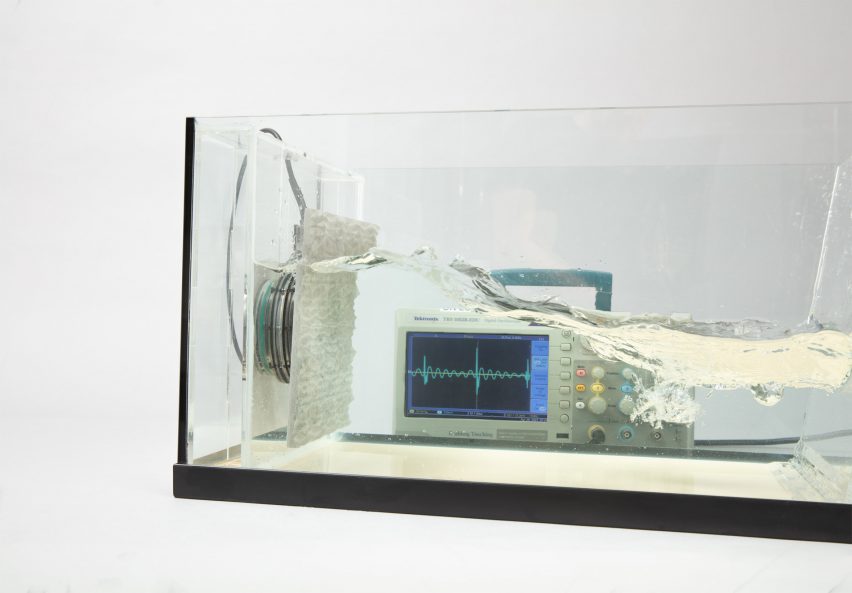
Piezoelectric Ocean Wave Energy by Phoebe Bamford
"Piezo-panels are a new form of wave power, which facilitate the transfer of energy from a wave's inertia into usable power, through piezoelectric crystals.
"Recent UK studies show that fossil fuels will be depleted before renewable alternatives can account for 100 per cent of the countries electricity demands.
"Over the last 15 years, development in the marine energy sector has been less than 3 per cent of wind and solar power combined, which initiated the motivation for the project.
"Most marine energy generators have a selection of issues consisting of: inefficiency (due to the use of turbines), maintenance difficulties, lack of self contained energy storage and an ill-suited design for the harsh environment.
"Piezoelectric ocean wave (POW) energy combats these points by using piezoelectric crystals to convert the impact force of a wave into a short burst of electricity.
"As the product is attached onshore, directly to ocean facing cliffs, which are constantly exposed to water, the electricity produced can be supplied directly to the National Grid.
"Tidal based generation methods are preferable compared to other current sustainable resources as they are consistent and will become ever more so with the rising sea levels due to global warming.
"A secondary consequence of this design is its potential to reduce coastal erosion by dampening the effects of waves, protecting the natural cliff face and maintaining their structural integrity."
Student: Phoebe Bamford
Course: BSc Product Design Engineering
Tutor: Dr Richard Bonser
Email: phoebebamford65[at]gmail.com
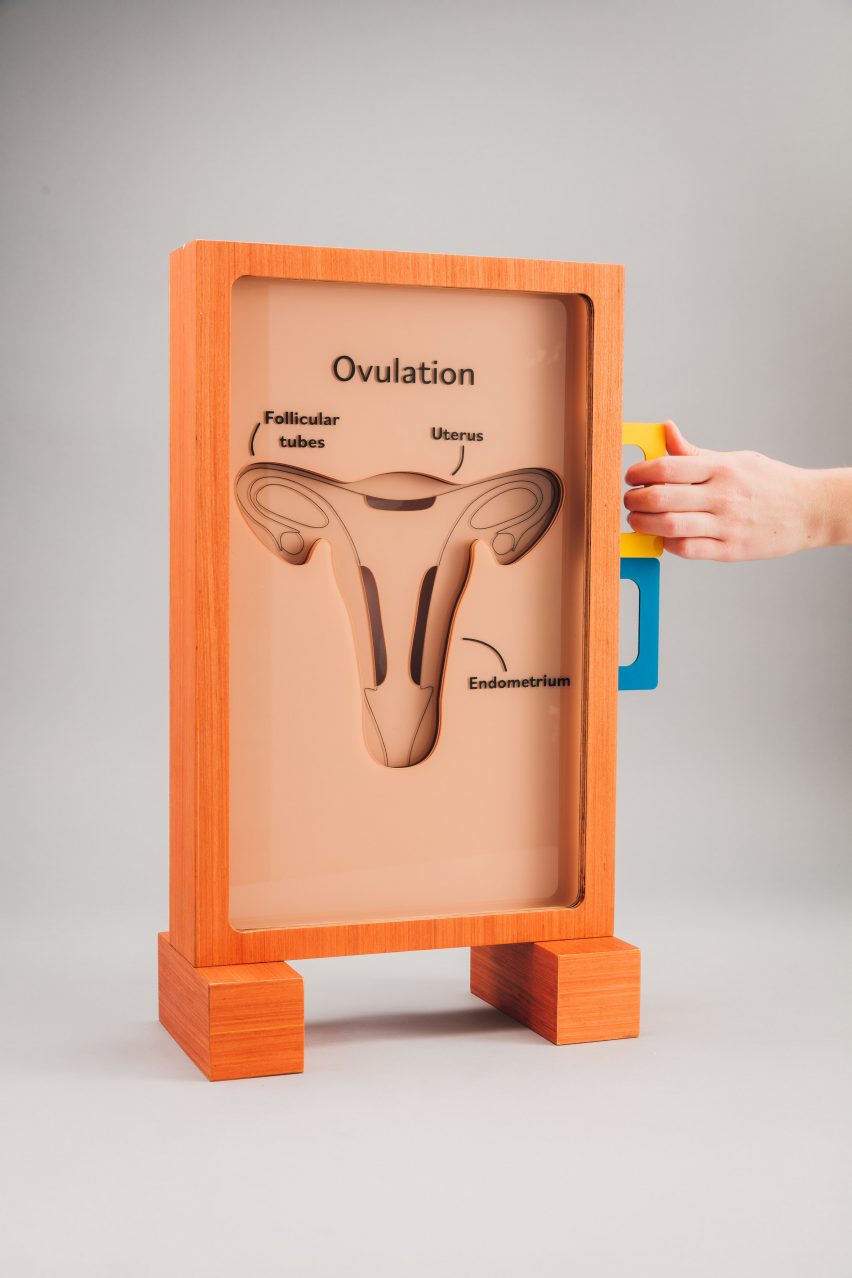
Maheena by Rikke Geelen
"Maheena aims to address the issue of limited menstrual hygiene awareness in rural India. A low-cost, high quality educational tool was developed that assists teachers in explaining menstrual hygiene through a demonstration.
"Before the workshop, a red liquid is poured into the reservoir at the top of the model. With the first tab on display, the teacher starts with a breakdown of the menstrual cycle.
"In the next step, the first valve is opened which releases the liquid into a uterus graphic, representing the endometrial lining that thickens during ovulation.
"The liquid is released with the bottom valve during the last step. By collecting the liquid in a menstrual pad, the teacher demonstrates how this pad can be a sanitary option for girls on their period.
"According to the most recent Indian National Family Health Survey, approximately 50 per cent of women between the ages of 15 and 24 do not use a sanitary form of menstrual protection.
"Teenagers in rural India have no access to the product, facilities and knowledge they need to take care of themselves while menstruating.
"This is due to the lack of awareness and education about the menstrual cycle and the proper methods to manage this."
Student: Rikke Geelen
Course: BSc Product Design
Tutor: Dr Arthi Manohar
Email: rikke.geelen[at]gmail.com
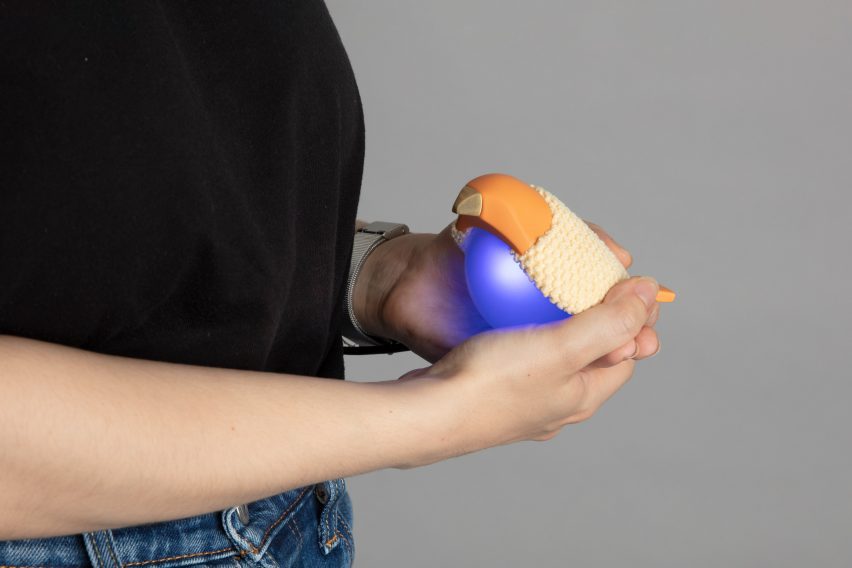
Aevi by Sarah Brashaw
"Aevi is a companion, a pet and a friend. If you are feeling overwhelmed with stress, take Aevi into your hands and escape for a moment.
"Aevi's form has been carefully designed to encourage the user to adopt a nurturing, cupping gesture when holding Aevi, allowing them to build a strong emotional connection with Aevi.
"Aevi uses machine learning to understand the individual, their unique behaviours and which methods calm them best. This is achieved by using a heart-rate sensor and emotion analysis of the individual's face, allowing Aevi to provide each user a unique experience.
"In order to redirect the user's attention away from negative emotions, Aevi engages both the mind and body through movement and breathing exercises.
"The user follows Aevi's instructions, moving the little bird in the direction called out, which is repeated until the heart-rate sensor determines that the user is calm, based on previous data."
Student: Sarah Brashaw
Course: BA Industrial Design and Technology
Tutor: Prof Vanja Garaj
Email: sarahbrashaw[at]virginmedia.com
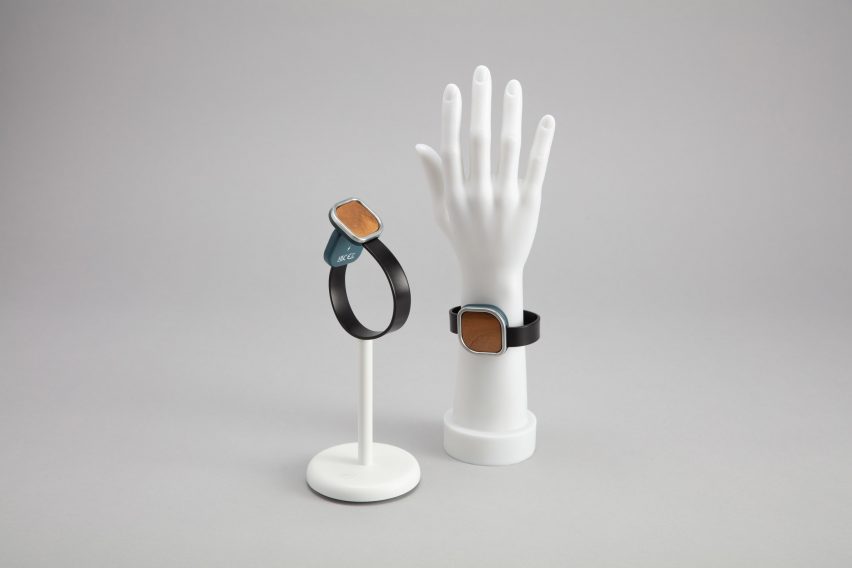
Nurture Recovery by Francesca Green
"Nurture Recovery is part of a wellness brand, Nurture Me, that is focused on promoting a positive recovery for postcaesarean women and their families.
"The Nurture Recovery is a device that prompts self-care activities to provide a steady and holistic recovery after a caesarean section.
"A caesarean section is a major abdominal surgery done to deliver a baby. This operation comes with a longer recovery period than vaginal birth does and causes many physical and emotional side-effects that can cause frustration and prevent a swift recovery.
"During the challenging postpartum period, maternal self-care is often neglected, and women find it difficult to prioritise their personal needs.
"The Nurture Recovery prompts daily self-care activities that nudge women to take care of themselves which in turn makes the recovery process easier and less overwhelming.
"These activities include checking the wound for infection, going for a walk, drinking water, sleeping and more. It does this through a smart, wearable device that the user wears on their wrist which vibrates and displays an icon showing what activity needs to be completed.
"The reminders are controlled by a supporting app which contains information and support on parenting, caesarean recovery, and provides a community platform where parents can meet and discuss shared experiences."
Student: Francesca Green
Course: BA Industrial Design and Technology
Tutor: Dr Arthi Manohar
Email: francescagreen[at]live.co.uk
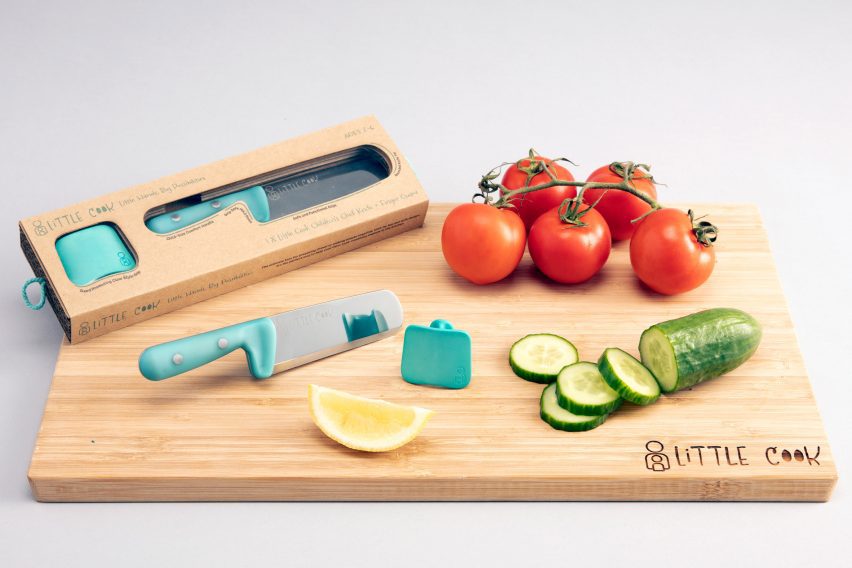
Little Cook – Children's Chef Knife and Finger Guard by Reece Jerrett
"The Little Cook Children's Chef Knife and Finger Guard set offers children the opportunity to learn cooking skills safely, allowing children to chop, dice and cut using a functional metal edge.
"The two included products work together to facilitate an engaging and safe activity for the children to partake in with their guardian and lets them contribute meaningfully to food preparation tasks.
"Cooking and food preparation are not only enjoyable creative activities, but also essential life skills that should be taught to children from a young age.
"However, there is a shortage of practical and safe food preparation products on the market for young children. Providing children with improper tools can lead to disengagement from the task and may even instil dangerous habits.
"To avoid this, it is crucial to provide children with tools that closely emulate those they will use in adulthood.
"The knife handle is designed with specific gripping points, and its shape and size are customised for three to six year olds to ensure a secure hold.
"The finger guard protects fingers and promotes the 'claw' grip method, encouraging children to engage in supervised food preparation and helping foster a lifelong love for cooking."
Student: Reece Jerrett
Course: BA Industrial Design and Technology
Tutor: Prof Hua Dong
Email: jerrett.reece[at]yahoo.co.uk
Partnership content
This school show is a partnership between Dezeen and Brunel University London. Find out more about Dezeen partnership content here.